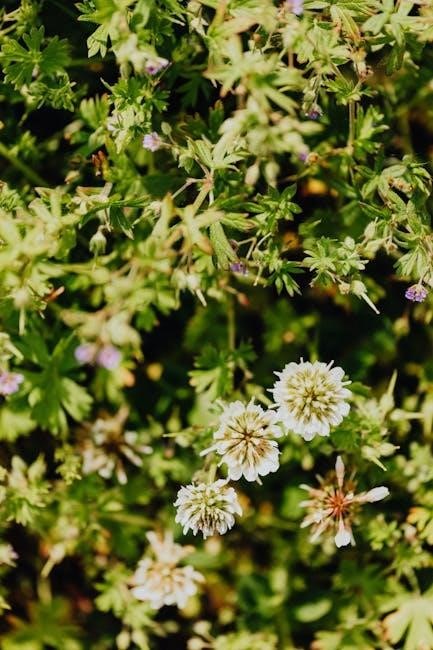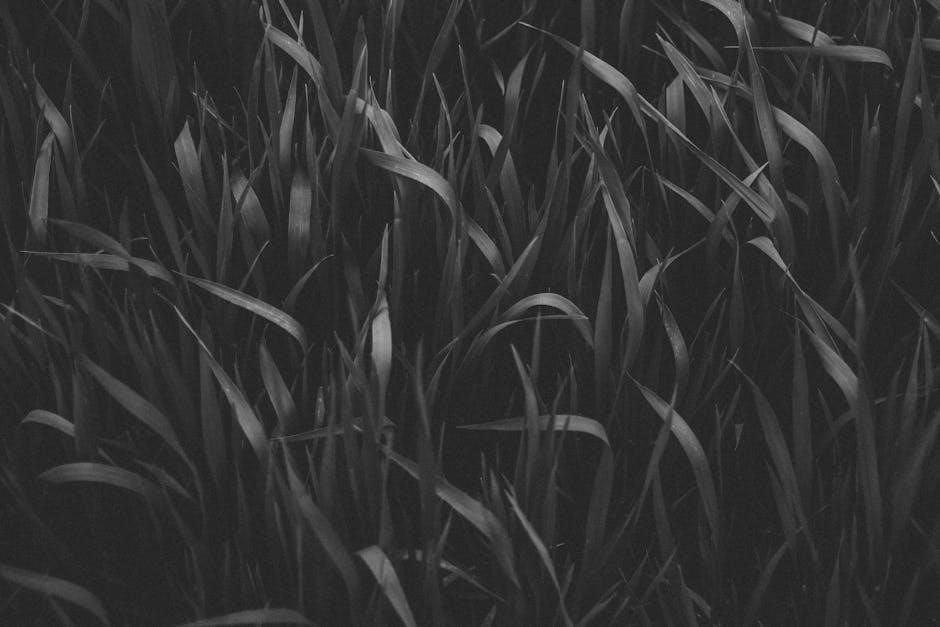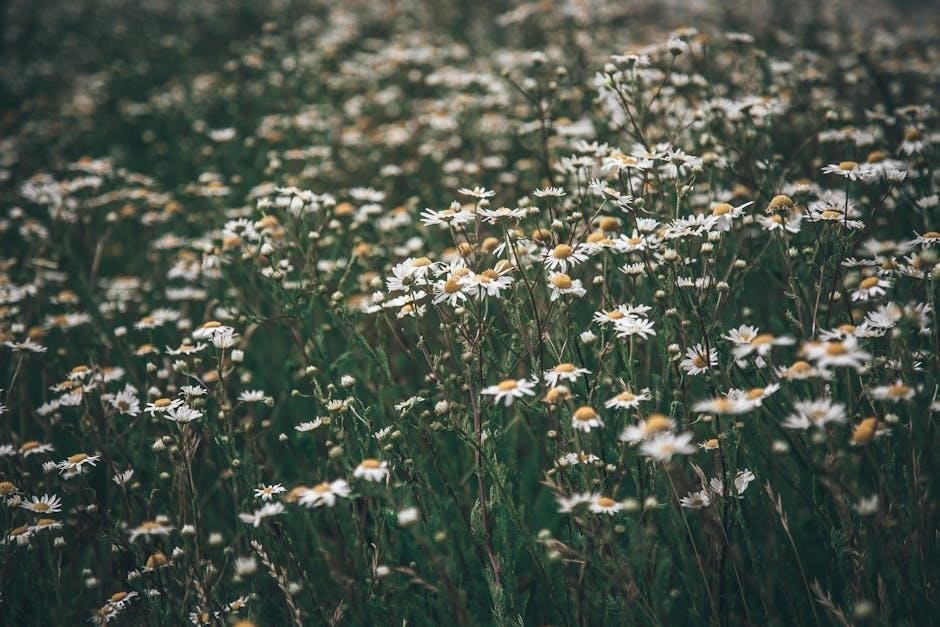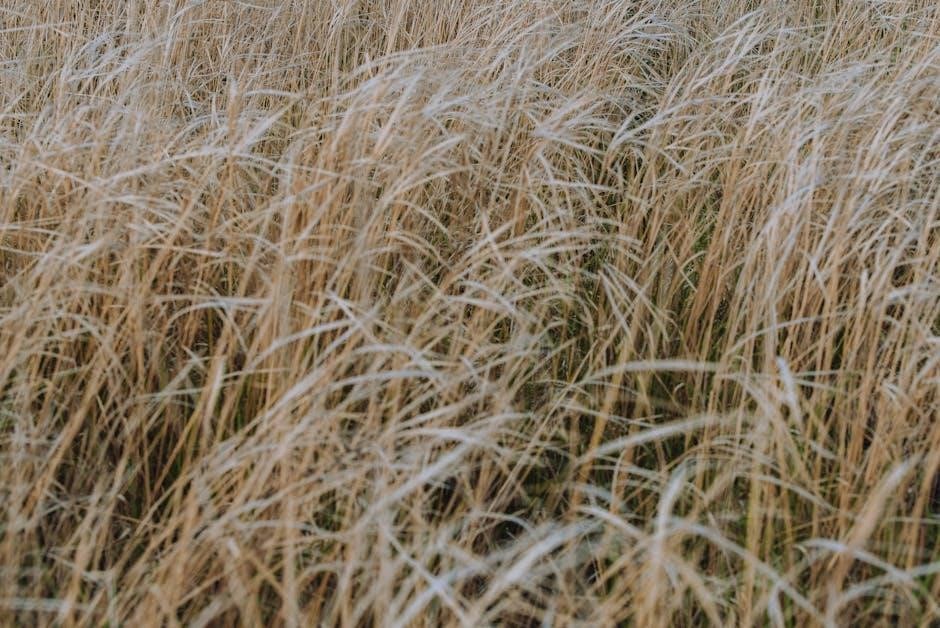Edible wild plants offer a gateway to natural nutrition and culinary exploration, providing fresh, nutrient-rich alternatives to cultivated foods. With proper identification using field guides, foragers can safely enjoy wild edibles, ensuring a harmonious balance between nourishment and environmental respect.
Importance of Foraging and Wild Edibles
Foraging for wild edibles connects us to nature, promoting sustainability and self-sufficiency. It offers fresh, nutrient-rich food while fostering environmental awareness. By learning to identify edible plants, individuals empower themselves to gather wholesome ingredients, reducing reliance on industrial systems. Foraging also preserves traditional knowledge and encourages responsible land stewardship, ensuring wild plants remain abundant for future generations. This practice not only enriches diets but also deepens our appreciation for the natural world, creating a healthier relationship between people and the planet.

Basic Principles of Identifying Wild Plants
Accurate identification of wild plants is crucial for safe foraging. Begin with field guides tailored to your region, as they provide detailed descriptions and images. Observe key characteristics such as leaf shape, flower color, and stem texture. Use plant keys to narrow down species by comparing features; Cross-reference multiple sources to confirm identification, especially for plants with poisonous lookalikes. Understanding habitats and growth patterns further aids in recognition. Practice with experienced foragers and remain cautious until confident in your skills to ensure a safe and enjoyable foraging experience.
Safety and Precautions
Correct identification is crucial to avoid poisonous plants. Use trusted field guides and expert guidance to ensure safety. Be aware of allergies and harvest sustainably.

Understanding Poisonous Lookalikes
Identifying edible plants requires distinguishing them from poisonous lookalikes, which can be nearly identical in appearance. Field guides often highlight these dangerous doppelgangers, emphasizing critical differences in leaves, flowers, or stems. For example, edible plants like wild garlic can be mistaken for toxic species such as lily of the valley. Careful observation of plant characteristics, such as vein patterns or growth habits, is essential. Consulting multiple sources and expert advice ensures safer foraging practices, preventing accidental ingestion of harmful plants. Stay vigilant, as mistakes can have severe consequences.
Emergency Protocol for Safe Foraging

If you suspect ingestion of a poisonous plant, act quickly but calmly. Contact a healthcare provider or poison control immediately. Provide detailed descriptions of the plant and symptoms. Do not attempt home remedies unless advised by professionals. Stay hydrated and avoid eating or drinking anything until medical guidance is received. Always carry a field guide and consider consulting an expert before consuming unfamiliar species. Prioritizing caution ensures safer foraging experiences and prevents potential health crises.

Legal and Ethical Considerations
Foraging for wild plants requires adherence to local laws and regulations. Obtain necessary permits and avoid protected areas. Ethically, practice sustainable harvesting to preserve plant populations and ecosystems. Respect private property rights and avoid over-harvesting. Be mindful of environmental impact and ensure foraging does not harm biodiversity. Always follow guidelines to maintain ecological balance and promote responsible stewardship of natural resources.
Essential Tools and Gear for Foraging
A reliable field guide, magnifying glass, gloves, sturdy basket, and sharp knife are must-haves for safe and efficient foraging. Use a plant identification app for confirmation.
Field Guides and Plant Identification Resources
Field guides are the cornerstone of safe and effective foraging. Books like A Field Guide to Edible Wild Plants by Lee Allen Peterson offer detailed descriptions, illustrations, and photographs to help identify over 370 edible species. They also highlight 37 poisonous lookalikes, ensuring foragers can distinguish safe plants. Digital tools, such as plant identification apps, complement traditional guides, providing up-to-date information and interactive features. These resources are invaluable for beginners and experienced foragers, enhancing confidence and enjoyment in the wild.
Necessary Equipment for Harvesting
Essential tools for harvesting wild edibles include a sturdy knife for cutting, a basket or bag for collecting, and gloves for protection. A field guide is crucial for accurate plant identification. Additional items like a magnifying glass can aid in examining plant details. Proper equipment ensures efficiency and safety while foraging, helping to preserve both the plants and the environment. These tools enhance the foraging experience, making it both enjoyable and sustainable for long-term use.
Plant Identification and Classification
Plant identification involves analyzing key characteristics like leaves, stems, and flowers. Classification systems organize species, aiding foragers in recognizing edible plants and avoiding poisonous lookalikes effectively.
Key Characteristics of Edible Plants
Identifying edible plants relies on recognizing distinct features such as leaf shape, flower color, stem texture, and growth patterns. Many edible species exhibit unique traits, like the rounded leaves of wild violets or the toothed edges of dandelion greens. Understanding these characteristics helps distinguish safe plants from harmful lookalikes. Seasonal changes and environmental factors can alter appearances, so consulting field guides or expert resources is essential for accurate identification. Learning these traits ensures safe and successful foraging experiences in the wild.
Botanical Classification for Foragers
Botanical classification organizes plants into genus and species, aiding foragers in understanding relationships and identifying edibles. For example, Taraxacum officinale denotes the common dandelion, a well-known edible. This system helps differentiate safe plants from poisonous lookalikes, such as distinguishing edible Allium ursinum (wild garlic) from toxic Liliaceae species. Field guides often use botanical names to ensure accuracy, making classification a critical tool for safe and effective foraging practices in the wild.
Habitats and Growing Conditions
Understanding habitats and growing conditions is crucial for locating edible wild plants. Plants like dandelions thrive in open fields, while wild garlic prefers shaded, moist woodlands. Coastal regions host seaweeds and salt-tolerant greens, whereas deserts support hardy cacti with edible fruits. Soil type, sunlight, and water availability shape plant growth. Foragers should study regional ecosystems to pinpoint where specific species flourish, ensuring successful foraging trips. This knowledge also aids in sustainable harvesting, preserving plant populations for future generations.

Preparing and Consuming Wild Plants
Wild plants can be prepared through boiling, roasting, or infusing, enhancing their flavor and nutritional value. Always ensure safe identification and proper cooking methods to enjoy them fully.
Common Methods of Preparation
Wild plants can be prepared in various ways to enhance flavor and safety. Boiling or steaming removes bitterness and toxins in some species. Roasting brings out earthy flavors, while infusing creates teas. Drying preserves plants for later use, maintaining nutritional value. Proper preparation ensures edibility and maximizes culinary enjoyment of foraged bounty.
Preservation Techniques for Wild Edibles
Preserving wild edibles extends their shelf life, allowing year-round enjoyment. Drying is a popular method, retaining nutrients and flavors. Freezing maintains freshness, while pickling adds tangy flavors. Infusing oils or vinegars captures plant essence, perfect for culinary use. Proper preservation ensures wild harvests remain safe and delicious throughout the seasons, offering sustainable food solutions.

Regional Guides to Edible Plants
Regional guides highlight edible species specific to local ecosystems, ensuring safe and effective foraging. They provide insights into diverse flora, adapting to unique environmental conditions globally.
North America: Common Edible Species
North America is rich in wild edibles. Dandelion greens, wild garlic, and berries like blueberries and blackberries are widely found. Plants such as chicory and plantain offer versatile uses in salads and teas. Mushrooms, including chanterelles and oyster mushrooms, are prized for their flavor. Field guides often feature detailed descriptions of these species, emphasizing their habitats and safe harvesting practices. This diversity makes North America a forager’s paradise, with opportunities to explore and utilize nature’s bounty responsibly.
Other Regions: Global Foraging Opportunities

Wild edibles thrive worldwide, offering diverse foraging opportunities. Europe boasts wild mushrooms, berries, and herbs like thyme. Asia features bamboo shoots and wild greens, while Africa highlights moringa and baobab. Australia’s bush foods include kakadu plum and bush tomatoes. Each region’s unique flora reflects local ecosystems and cultural traditions. Field guides tailored to these areas help identify species, ensuring safe and sustainable harvesting. Global foraging connects people to their environments, fostering appreciation for nature’s culinary bounty and promoting cross-cultural exchange of knowledge.

Ethical Foraging Practices
Ethical foraging emphasizes sustainability, responsibility, and respect for nature. It involves harvesting plants thoughtfully to preserve ecosystems, ensuring future generations can enjoy wild edibles while maintaining environmental balance.
Sustainable Harvesting Techniques
Sustainable harvesting ensures the longevity of wild plant populations by minimizing ecological impact. Techniques include picking only what is needed, avoiding over-harvesting, and leaving enough for regeneration. Harvesting methods should never harm the plant’s ability to reproduce or survive, such as taking seeds or leaves without damaging the root system. Additionally, avoiding sensitive habitats and respecting seasonal cycles are crucial. These practices not only preserve biodiversity but also ensure that future foragers can enjoy the same abundance of edible wild plants;
Respecting the Environment
Respecting the environment is crucial when foraging for edible wild plants. This involves minimizing ecological impact by leaving enough plants to regenerate and avoiding damage to roots or surrounding habitats. Avoiding protected areas and threatened species is essential, as is being mindful of local regulations. Taking only what is needed ensures sustainability and preserves biodiversity. By fostering a deep connection with nature and prioritizing its well-being, foragers can help maintain healthy ecosystems while enjoying the bounty of wild edibles responsibly.
